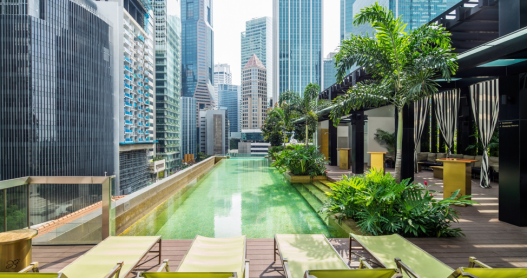Overview
When’s the best time to go to Thailand?
There are three distinct seasons in Thailand: relatively cool from November to February, hot from March to June, and rainy from July to October. Generally speaking, it’s best to visit during the cool season. The hot season really is very hot, but this is also a popular time to visit because of Songkran (Thai New Year). Monsoon season is actually surprisingly pleasant, with heavy rains interspersed with long spells of sunshine.
How to get around Thailand
Bangkok is a hub for world travel with direct flights to Europe, the Middle East, Australia, and all the major cities in Asia as well as many secondary cities. There are no direct flights between the United States and Thailand, however: journeys usually involve a stop in another Asian city like Tokyo or Hong Kong. There are also international airports in Chiang Mai and Phuket. Once you’re in the country, it’s easy to get around Thailand. There is a top-class supply of internal flights, the public transport infrastructure is comprehensive, and you can always hire a car.
Food and drink to try in Thailand
Thai is one of the world’s most famous cuisines. From street-side feasts that come in at just a few dollars to full-on five-star blowouts, the dining options for local specialties are breathtaking. The flavors vary widely from region to region. Northern Thai food carries Burmese and Chinese influences. The northeastern Isaan cuisine shares much with Laos and Cambodia, while the spicy coconut milk–infused dishes of southern Thailand carry strong notes of Malay and even Indonesian cuisine. The best introduction to traditional Thai food is in Bangkok, where you can explore every nook and cranny of the country’s abundant larder. The Thai capital is also the best place to experience contemporary cuisine. Venues like Nahm, Bo:Lan, and Gaggan (this latter is molecular Indian) have featured in recent lists of the continent’s best restaurants, and culinary standards are lofty across the board.
Events
It’s worth making the effort to catch Loy Kratong, the November river festival in which Thai people ignite fireworks, release airborne lanterns, and float thousands of offerings to the river spirits on the country’s waterways. Thai New Year (Songkran) in April is a raucous celebration that sees Thais and visitors drench each other with water as the temperatures soar. To better understand the Isaan belief in ghosts and spirits, seek out Phi Ta Khon, a colorful merit-making festival that is held in the village of Dan Sai in Loei Province. It takes place over three days around the first weekend after the sixth full moon of the year. Also look out for the Surin Elephant Round Up, held in late November each year, during which participants prepare enormous buffet spreads for the local pachyderms.
Culture in Thailand
With sacred spiritual sites complemented by modern museums, hip galleries, and other cerebral attractions, Thailand is the perfect place for an injection of culture. Bangkok, especially, is awash with international-class museums and plenty of contemporary art. For the more traditional side of Thai culture, bask in the history and grandeur of the Grand Palace in Bangkok. The nation’s long and storied history of majestic Buddhist kingdoms can also be witnessed at sites like Sukhothai and Ayutthaya—both former capitals. Chiang Mai, the northern capital, has an incredible array of wats (Buddhist temples) as well as a youthful and happening art scene centered upon Niemenhaemin Road.
Local travel tips for Thailand
Thailand’s many contemporary clubs, bars, and nightspots belie the fact that most Thais prefer local sounds to foreign imports. Thai country music, which includes luk thung (rowdy and mostly instrumental) and mor lam (a slower, more vocals-orientated sound), is hugely popular around the nation. In Bangkok, venues like Isaan Tawandaeng and Isaan Tur Tur are packed with migrant workers whose level of boisterousness is commensurate with the flow of booze.













